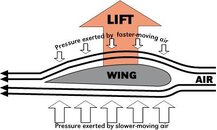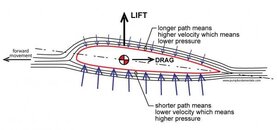Eric Sedletzky
Contributor
Yes but it's different, it's hydrolic pressure not pneumatic pressure.There is still a pressure differential.
The point of my post was to point out that there is no such thing as "lift" underwater.
It's simply hydrolic force, similar to you pushing yourself off a stone wall. The wall doesn't move, you do.







